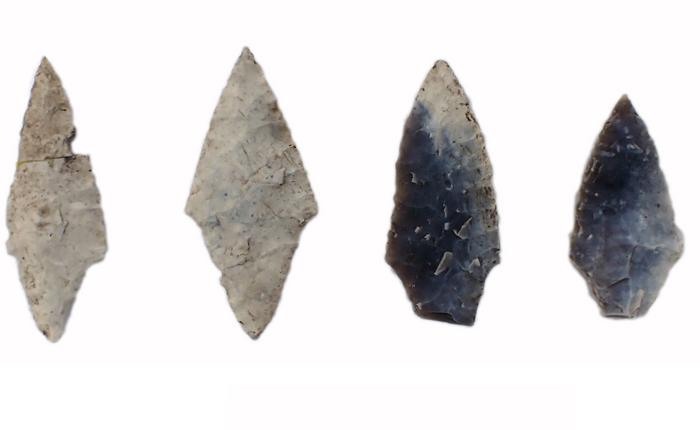A groundbreaking study has brought fresh perspectives to our understanding of Stone Age societies, challenging long-held assumptions about the roles and identities of individuals interred with stone tools. Excavations and analyses conducted at the Zvejnieki cemetery in northern Latvia—a vast burial ground dating back more than 5,000 years—have revealed that stone tools were not exclusively buried with men, as traditionally believed, but also commonly placed alongside women and children. This finding significantly reconfigures our interpretations of gender and societal roles in prehistoric Europe.
Zvejnieki, one of the largest known Stone Age cemeteries on the continent, holds over 330 graves, offering a window into the complex funerary customs and social structures of early European communities. Although the site has been the subject of archaeological scrutiny for decades, prior research largely overlooked the stone tools found within graves, often dismissing them as mere utilitarian objects devoid of symbolic or ritual value. This new study, led by Dr. Aimée Little from the University of York in collaboration with specialists from several European institutions, has refocused attention on these artefacts using advanced microscopic analysis to decode their manufacture, use, and cultural significance.
Utilizing high-powered microscopy and experimental archaeology methods, researchers delved into the micro-wear patterns and production techniques of numerous stone tools buried at Zvejnieki. Their findings uncovered evidence that many tools were specifically crafted and then deliberately broken as part of funerary rituals, rather than solely being utilitarian implements. This intentional breakage strongly suggests symbolic practices intertwined with death rites, reflecting complex social and ritual behaviors previously underestimated in Stone Age cultures across the eastern Baltic region.
One of the most striking discoveries is the apparent egalitarian distribution of stone tools across genders and age groups. Contrary to entrenched stereotypes linking lithic technology exclusively to male hunting activities, the analysis indicates women were just as likely—if not more so—to be accompanied by stone tools in their burials. Similarly, children and elderly individuals were disproportionately represented as recipients of these artefacts, suggesting that tool possession transcended simplistic categorizations tied to adult male roles and instead held broader symbolic or social importance within the community.
This research disrupts the historical narrative of “Man the Hunter,” a paradigm long influential in archaeology and anthropology which portrayed Stone Age men primarily as hunters wielding stone tools, while women were relegated to domestic or supportive roles. Dr. Little highlights that such assumptions even affected the biological sex determination of infant remains, as the presence or absence of lithic tools was erroneously used as a proxy for gender identification. By challenging this bias, the study calls for a reassessment of gender roles and mortuary practices in prehistoric societies, emphasizing the need for nuanced interpretations grounded in empirical evidence.
Dr. Anđa Petrović from the University of Belgrade, a collaborator on the project, reinforced this perspective by stressing the limitations of imposing modern gendered frameworks onto ancient burial contexts. Her insights underscore how lithic grave goods played multifaceted roles in mourning rituals, reflecting the lived experiences and identities of women, children, and men alike. This more fluid understanding of material culture reconfigures how we perceive social complexity and individual agency within the Stone Age communities of northern Europe.
An intriguing aspect revealed by microscopic analysis involves the identification of tools that appear unused in any functional capacity. These pristine artefacts likely held purely symbolic worth, intended specifically for inclusion as grave goods. Their presence bolsters the hypothesis that stone tools were integral to ritual performance and social communication surrounding death, rather than merely practical items passed down or left with the deceased without particular significance.
The deliberate fracturing of tools prior to burial found across multiple graves suggests standardized funerary practices that transcended individual burial customs, pointing to shared regional beliefs and ritual conventions during the late Mesolithic and early Neolithic periods. Such a cohesive ritual vocabulary emphasizes the cultural cohesion among communities inhabiting the eastern Baltic and enhances our appreciation of prehistoric symbolic worldviews.
Beyond redefining the role of material culture in ancient death rituals, the study opens avenues for reexamining mortality perspectives within early human societies. Dr. Little articulates that understanding why communities invested effort in “breaking” tools before funerary deposition provides insights into how the living conceptualized death, memory, and the afterlife. These practices reveal a complex interplay between tangible objects and intangible beliefs, illuminating how people navigated transitions between life and death.
This research was published in the multidisciplinary journal PLOS One and represents a collaborative effort among the University of York, the University of Belgrade, the University of Helsinki, the University of Latvia, and the University of Tartu. Supported by the Arts and Humanities Research Council (AHRC), this project exemplifies the power of integrating archaeological science and epistemological critique to transform prehistoric narratives.
In summary, the revelations emerging from the Zvejnieki cemetery challenge essentialist views of gender and social roles within Stone Age Europe. By demonstrating that stone tools were embedded with symbolic meanings related to identity and ritual observance—shared by women, children, and men alike—this study encourages archaeological scholarship to rethink foundational concepts regarding gender, technology, and death in human history. It also underscores the richness contained within seemingly mundane artefacts, which when examined through advanced analytical approaches, can unlock profound insights about our collective past.
The implications of this research extend beyond archaeology. They invite a broader reflection on how contemporary biases shape our understanding of ancient societies and remind us of the importance of questioning inherited assumptions in scientific inquiry. As such, the Zvejnieki study marks a pivotal moment in reimagining the social fabric and mortuary landscapes of Europe’s earliest communities.
Subject of Research: Stone Age burial practices and the symbolic role of stone tools in funerary rituals.
Article Title: Not specified in the source content.
News Publication Date: Not specified in the source content.
Web References:
https://www.eurekalert.org/multimedia/1091265
Image Credits: University of York
Keywords: Stone Age, Archaeology, Experimental archaeology, Burial rites, Gender roles, Lithic tools, Mortuary practices, Zvejnieki cemetery, Funerary rituals




